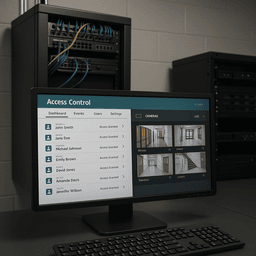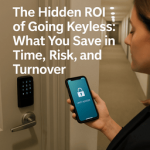
Modern school security doesn’t live in silos. As access control systems, video surveillance, and intercoms become smarter and more cloud-connected, they’re relying more heavily on IT infrastructure—and that means school IT directors are becoming key players in campus safety.
Physical security and IT are no longer separate conversations. In fact, failing to align the two can lead to serious vulnerabilities, system inefficiencies, and unnecessary costs.
At SSP, we’ve partnered with schools across the Southeast to help IT leaders take charge of their institution’s physical security strategy. Here's what you need to know.
k
k
Why Physical Security Now Belongs in the IT Department
Historically, school safety decisions lived with administrators or facilities staff. But that’s changing for a few key reasons:
-
Most modern security devices are IP-based.
Cameras, access control readers, intercoms—they all run over your school’s network. -
Cloud-based platforms require secure connectivity.
Especially with remote management, mobile credentials, and multi-campus deployments. -
Cybersecurity and physical security now overlap.
A compromised security camera could be a backdoor to your network.
An unsecured access control server could be an entry point for bad actors—digital or physical.
In short: the tools that keep your building safe now require the same governance as your software systems.
k
k
Top Areas Where IT & Physical Security Intersect
🔐 1. Access Control Systems
Modern access control is no longer just a badge reader and a maglock.
-
Systems now require user credential management
-
Data is logged and stored—sometimes in the cloud
-
Admins need role-based access and secure authentication
IT Tip: Choose access control platforms that offer Active Directory or SSO integrations, so you can sync access levels with staff roles.
k
k
🎥 2. Video Surveillance Infrastructure
High-resolution cameras = higher data demands. Many systems now offer:
-
IP-based streaming
-
Cloud or hybrid storage
-
AI-powered video analytics
IT Consideration: Surveillance traffic can overwhelm your network if not segmented properly. Work with your integrator to configure VLANs and bandwidth throttling.
k
k
🔒 3. Cybersecurity Risks of Physical Devices
Physical security devices are now endpoints. If left unsecured, they can:
-
Be hacked to expose footage
-
Provide entry to your internal network
-
Become vectors for ransomware
Best Practice: Treat security hardware like any other IoT device—keep firmware updated, disable unused ports, and enforce strong authentication protocols.
k
k
🧠 4. User Permissions & Identity Management
From substitute teachers to after-hours contractors, managing who has access to what—and when—is critical. But that only works if the physical access system is aligned with:
-
HR systems or SIS (Student Information Systems)
-
IT-managed directories
-
Real-time badge issuance or revocation
IT Role: Ensure systems support API integrations and automate credential provisioning where possible.
k
k
Questions IT Directors Should Be Asking
Before any security system deployment or upgrade, ask:
-
Will this device live on our network?
-
How will we authenticate users or admins?
-
Where will data be stored, and is it FERPA-compliant?
-
What cybersecurity standards does the vendor follow?
-
Can we integrate this system with our existing IT tools?
k
k
What SSP Does Differently for School IT Teams
We don’t just install devices—we collaborate with your IT team to ensure every physical security component aligns with your digital infrastructure. That means: ✅ Working within your network architecture
✅ Setting up secure user permissions
✅ Providing cloud or on-prem options based on your data policies
✅ Training your team on remote management tools and admin best practices
k
k
Final Thoughts
The future of school safety lives at the intersection of technology and trust. By actively involving IT leaders in physical security planning, schools gain smarter systems, faster response times, and a safer environment for students and staff.
SSP helps schools bring physical and digital protection under one roof—securely.


